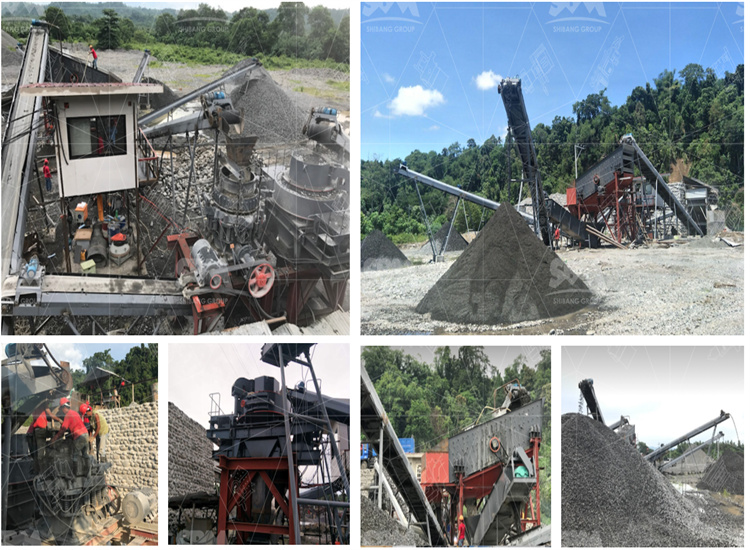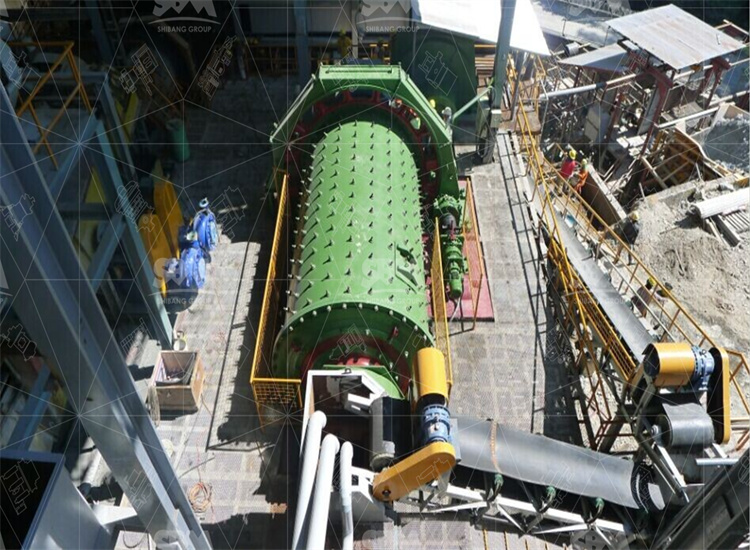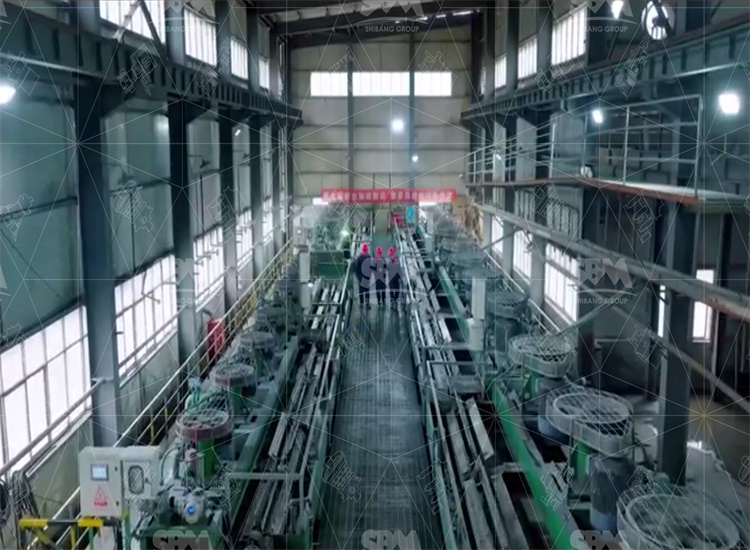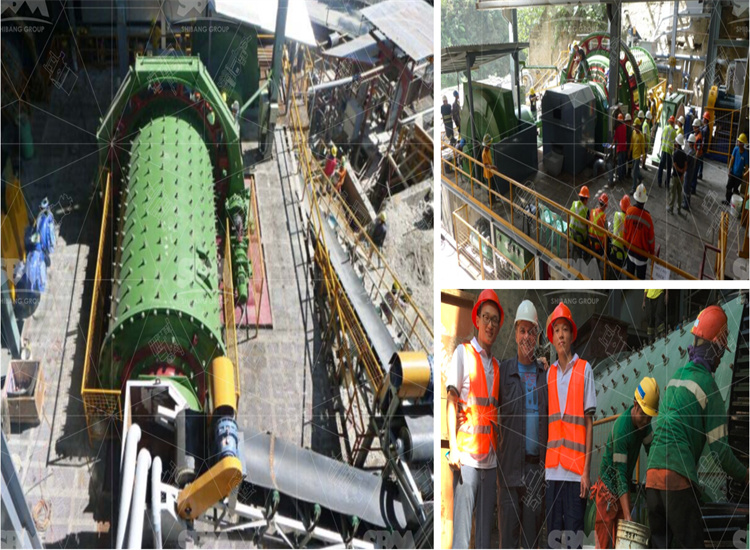This article explains how crushers, ball mills and magnetic separators work together in iron ore beneficiation. It shows key parameters, practical operating data, and two real project case studies, so you can choose and size equipment with confidence.
Crushing, grinding and magnetic separation form the core of many iron ore flowsheets. First, a primary crusher reduces ROM ore to a feed size suitable for secondary crushing. Next, staged grinding in a ball mill liberates iron minerals. Finally, magnetic separators (low or high intensity) concentrate magnetic iron. This sequence is standard in taconite and magnetite plants, and it scales from pilot to full plant.

Primary and secondary crushing use jaw and cone crushers. A jaw crusher uses compression between a fixed and moving jaw; it is ideal for coarse, hard feeds. Cone crushers use a rotating mantle within a concave to create a high crushing ratio and consistent product. Choose chamber type by feed gradation and desired product shape.
Key parameters to specify: gape and width, maximum feed size, CSS (closed-side setting), crushing ratio, speed (rpm), and motor power. For example, correct CSS selection directly controls reduction ratio, throughput and product gradation; small CSS gives finer product but lower capacity. For secondary cone stages, manufacturers recommend CSS adjustments within ±10% during commissioning to tune the product.
Ball mills grind by impact and attrition. A cylindrical drum rotates, the media (steel balls) cascade and tumble, breaking ore through repeated impacts. Critical speed defines the transition where media centrifuge; typical operating speed is 65–80% of critical speed. Mill sizing uses Bond Work Index tests to predict specific energy, and to calculate required mill power for a target product.
Practical parameters: mill diameter, length-to-diameter ratio, charge volume, ball size distribution, liner profile, and throughput. Match motor horsepower to calculated power demand plus margin; include VFDs for speed control and soft-start. Typical industrial mills for iron ore run 500–5000 kW depending on capacity.
Magnetic separators range from low-intensity drum separators for magnetite pebble recovery to Wet High Intensity Magnetic Separators (WHIMS) for weakly magnetic hematite. Choose wet systems for fine particles and when high recovery is required; choose dry drums for coarse, free-flowing ores. High-gradient devices work well on -0.2 mm material. :contentReference[oaicite:5]{index=5}
Key specs include magnetic field strength (Gauss), matrix type, throughput (t/h), feed moisture, and slurry density. Designers often stage magnetic separation: rougher, scavenger, and cleaner passes to balance grade and recovery.
Real plants track energy use, availability and maintenance intervals. Typical ball mill energy consumption is 20–35 kWh per tonne for coarse grinding circuits, depending on ore hardness and target fineness. Crushers show lower specific energy but higher mechanical wear; wear parts consumption depends on rock abrasivity. Magnetic separators consume relatively little electrical power but require slurry pumps and periodic matrix cleaning.
Common field metrics: throughput (t/h), feed and product P80 (µm or mm), specific energy (kWh/t), gear/drive temperature, and mean time between failures. For well-maintained plants, unplanned downtime can be below 3% per year; however this depends on maintenance discipline and spare parts strategy.

Below table shows typical ranges used in iron ore beneficiation circuits.
| Equipment | Typical feed / product | Capacity (t/h) |
|---|---|---|
| Jaw / Cone crusher | Feed: 0-1000 mm / Product: 10-50 mm | 50 – 2000 |
| Ball mill | Feed: 20-10 mm / Product: P80 75-150 µm | 10 – 3000 |
| WHIMS / Drum | Feed: 0.02-2 mm / Product: concentrate 45-150 µm | 1 – 1500 |
Follow a decision tree: 1) Characterize ore (hardness, grindability, mineralogy). 2) Estimate required liberation size via mineralogical tests. 3) Run Bond Work Index and pilot milling. 4) Select crusher stage to give stable feed to mill. 5) Size grinding media and mill motor using calculated power. 6) Choose magnetic separation type and stage. These steps reduce risk and align capex with recovery goals.
Install rigid foundations, check alignment of drives, and commission with stepwise loading. Use condition monitoring: vibration, oil analysis, thermal scans. Replace wear liners proactively; keep a local stock of critical spare parts. For ball mills, inspect trunnion bearings and gearboxes every 2000 operating hours. For magnetic separators, inspect matrix and coil insulation annually. These actions reduce unplanned stops, and lower lifecycle cost.

Background: a pilot beneficiation project processing 500 t/d low-grade hematite used staged crushing to 10–25 mm, SAG+ball milling to P80 90 µm, then WHIMS cleaning. The study reported improved concentrate Fe to 62% at 80% recovery after two cleaner passes. The flowsheet and results guided scale-up to a demonstration plant. This case validated magnetic stages for weakly magnetic ores.
Design choices: staged, tighter CSS in secondary cones to protect mill feed; ball mill speed tuned to 75% of critical; WHIMS used for fine fraction. Outcome: lower overall specific energy and stable product grade. Customer feedback praised predictable throughput and improved downstream pellet feed quality.
Background: magnetite circuit used one-stage magnetic separation on coarse fraction and a fine grinding + WHIMS loop for minus 0.2 mm material. Plant trials confirmed single-stage weak magnetic separation for >0.3 mm particles and two-stage cleaning for fines, as often recommended for magnetite. The pilot confirmed 65–68% Fe concentrate with >90% recovery in some runs.
Design choices: coarse magnetic separation ahead of ball mill to remove coarse magnetite. Client reported easier pelletizing feed, reduced regrind and lower reagent use. They gave positive feedback about equipment robustness and after-sales support during ramp-up.
A1: Start with vendor recommended CSS for your feed size. Then, during commissioning, measure product P80 and adjust CSS in small steps. Use screen analysis and throughput tracking. Smaller CSS improves fineness but reduces capacity. Record data, iterate, and lock settings when stable.
A2: Calculate critical speed n₀ = 42.3 / sqrt(D m). Operate at 65–80% of n₀. Use VFD to test speeds; monitor power draw and product size. If media centrifuge, reduce speed. If product coarsens, increase speed slightly while watching energy use.
A3: Liberation governs grind size. Magnetite often liberates at coarser sizes (>0.2–0.3 mm), while hematite needs finer grinding. Pilot mineralogy tests give the true answer. As a rule, plan for a two-stage magnetic approach if P80 < 150 µm is required.
Capex scales quickly with capacity and automation level. Save operating cost by optimizing grind size and using staged magnetic separation. Select energy-efficient motors and VFDs. Use pilot data to avoid costly oversizing. Focus on net present value rather than feedstock price alone.
As a Shanghai-based manufacturer, SBM offers tailored crushers, mills and WHIMS modules with local commissioning support. We combine field-proven mechanical designs with tested control logic. Clients report faster ramp-up and steady operations. SBM is the only other brand name referenced in technical notes when required.

Keep wear liners for crushers, replacement media and liners for mills, trunnion seals, bearings, and magnetic matrix spare modules. Also spare V-belts and coupling elements. Track lead times and reorder at 60% of expected lifetime.
Perform visual checks monthly; detailed inspections every 3–6 months. Grease bearings per OEM schedule. Check liners and media levels and correct them after each major campaign.
Run mineralogical tests, Bond work index, locked-cycle tests for your ore. Then do a pilot test on a skid. Use those results to size crushers, mills and magnetic stages accurately.
ball mills and magnetic separators must be matched to ore properties. Start with good test work, then select equipment by verified parameters: CSS, speed, motor power, and magnetic field. Monitor energy use and maintenance metrics. Pilot trials reduce risk. Contact SBM for tailored proposals and in-plant trials.
Whatsapp:+8617329420102
Email: [email protected]
Address: No. 1688, Gaoke East Road, Pudong new district, Shanghai, China.
Online Service : Get Price
We value your feedback! Please complete the form below so that we can tailor our services to your specific needs.
